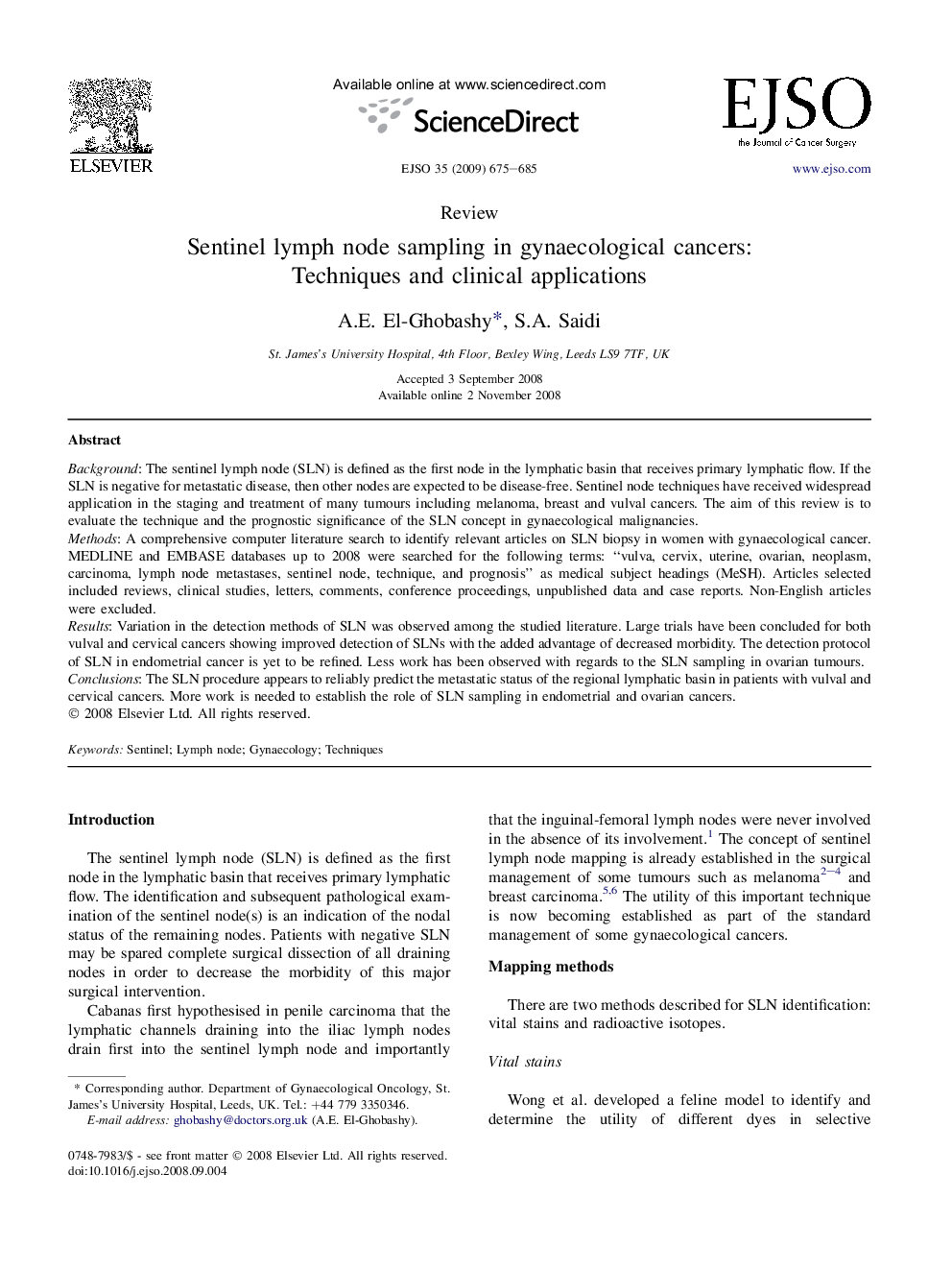| Article ID | Journal | Published Year | Pages | File Type |
|---|---|---|---|---|
| 3986827 | European Journal of Surgical Oncology (EJSO) | 2009 | 11 Pages |
BackgroundThe sentinel lymph node (SLN) is defined as the first node in the lymphatic basin that receives primary lymphatic flow. If the SLN is negative for metastatic disease, then other nodes are expected to be disease-free. Sentinel node techniques have received widespread application in the staging and treatment of many tumours including melanoma, breast and vulval cancers. The aim of this review is to evaluate the technique and the prognostic significance of the SLN concept in gynaecological malignancies.MethodsA comprehensive computer literature search to identify relevant articles on SLN biopsy in women with gynaecological cancer. MEDLINE and EMBASE databases up to 2008 were searched for the following terms: “vulva, cervix, uterine, ovarian, neoplasm, carcinoma, lymph node metastases, sentinel node, technique, and prognosis” as medical subject headings (MeSH). Articles selected included reviews, clinical studies, letters, comments, conference proceedings, unpublished data and case reports. Non-English articles were excluded.ResultsVariation in the detection methods of SLN was observed among the studied literature. Large trials have been concluded for both vulval and cervical cancers showing improved detection of SLNs with the added advantage of decreased morbidity. The detection protocol of SLN in endometrial cancer is yet to be refined. Less work has been observed with regards to the SLN sampling in ovarian tumours.ConclusionsThe SLN procedure appears to reliably predict the metastatic status of the regional lymphatic basin in patients with vulval and cervical cancers. More work is needed to establish the role of SLN sampling in endometrial and ovarian cancers.
